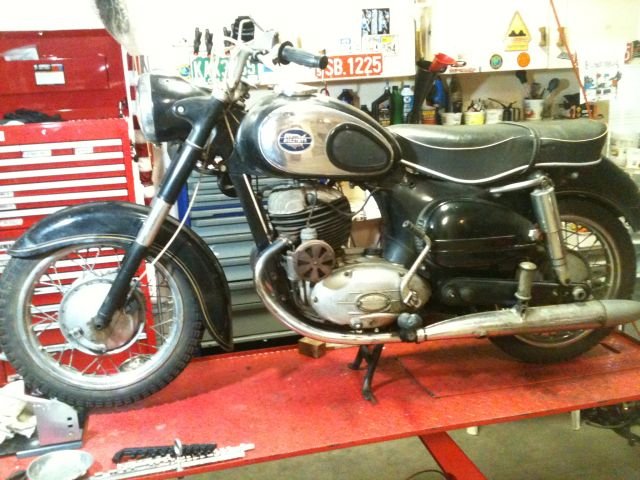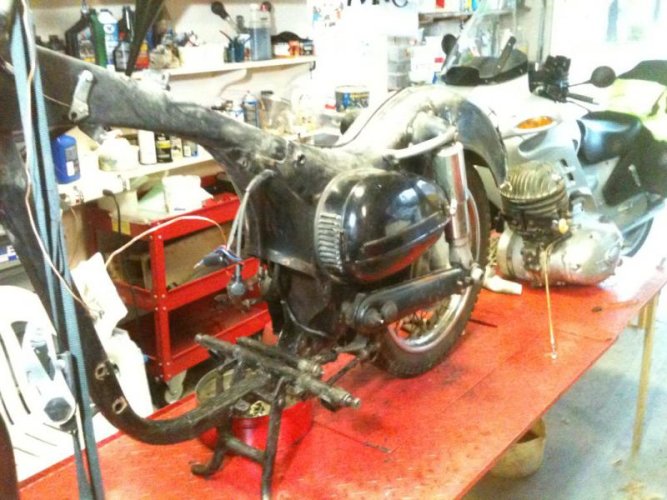Jeff488
Aspiring Profligate
I know that a lot of those of us who work on our beemers have occasionally wondered what the engineers could have been thinking.
I read somewhere that someone thought that all the engineers who worked on the German enigma crypto machine design found employment with BMW after the war.
Well, while working on the reconditioning of my recently acquired '65 Allstate/Puch "twingle" 250, I think I found where those enigma engineers rejected by BMW found a job.
Criminy dutch, Alice, it's like they designed the twingle engine and then, apparently believing that wasn't odd enough, decided to make it run backwards! This I discovered while setting the timing for the first time. I never saw a motorcycle engine that turned opposite to the bike's wheels, but this one does. I'm not counting engines that turn parallel to the bikes centerline. That makes sense of another sort.
Furthermore, the designers apparently had access to a cheap supply of nuts and bolts in 9 and 11 mm sizes. Where one usually finds a 10mm hex head on other bikes, on the twingle there will be an eleven, and where you'd expect to find an 8mm there's a 9mm.
The bike is built like a tank. It has a 7 plate clutch in an engine delivering 16.5 hp when new. Just a bit quirky, but that gives it character.
Additionally, the way the rear hub is assembled I can't begin to describe. I bet it took me half an hour today to figure out how to get it apart so the bearings can be lubed. The only available repair manual doesn't help much, but that's not a big deal. I'm having a great time rescuing this old timer, and there's a guy in Milwaukee who specializes in Puchs. Can't ask for more.
Should be back on the road in a couple months.
Let the weirdness continue.
I read somewhere that someone thought that all the engineers who worked on the German enigma crypto machine design found employment with BMW after the war.
Well, while working on the reconditioning of my recently acquired '65 Allstate/Puch "twingle" 250, I think I found where those enigma engineers rejected by BMW found a job.
Criminy dutch, Alice, it's like they designed the twingle engine and then, apparently believing that wasn't odd enough, decided to make it run backwards! This I discovered while setting the timing for the first time. I never saw a motorcycle engine that turned opposite to the bike's wheels, but this one does. I'm not counting engines that turn parallel to the bikes centerline. That makes sense of another sort.
Furthermore, the designers apparently had access to a cheap supply of nuts and bolts in 9 and 11 mm sizes. Where one usually finds a 10mm hex head on other bikes, on the twingle there will be an eleven, and where you'd expect to find an 8mm there's a 9mm.
The bike is built like a tank. It has a 7 plate clutch in an engine delivering 16.5 hp when new. Just a bit quirky, but that gives it character.
Additionally, the way the rear hub is assembled I can't begin to describe. I bet it took me half an hour today to figure out how to get it apart so the bearings can be lubed. The only available repair manual doesn't help much, but that's not a big deal. I'm having a great time rescuing this old timer, and there's a guy in Milwaukee who specializes in Puchs. Can't ask for more.
Should be back on the road in a couple months.
Let the weirdness continue.






